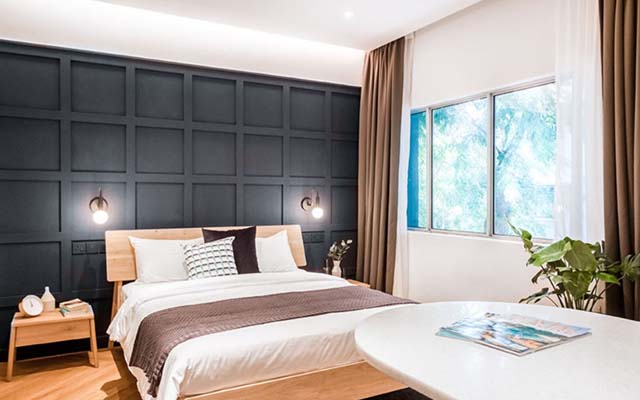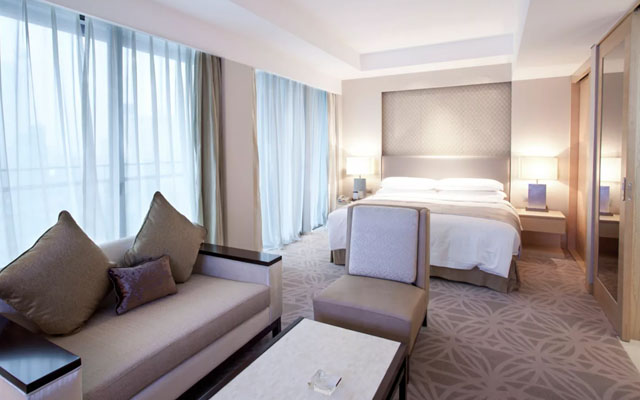Be a technology player and let guests be – they know what they want, and have ways and devices (pun intended) to be the most authentic version of themselves when on the road
 I tried out co-living for the first time recently. Yes, it’s true that what hotels are trying to do today – using technology to reduce operational costs, going local or being in the neighbourhood (even if they aren’t), getting strangers to socialise with one another – the co-living model has done it first, and done it well.
I tried out co-living for the first time recently. Yes, it’s true that what hotels are trying to do today – using technology to reduce operational costs, going local or being in the neighbourhood (even if they aren’t), getting strangers to socialise with one another – the co-living model has done it first, and done it well.
A key insight for me is that the best co-living players can make a stay seamless and efficient because technology is their DNA. Everything starts and ends with technology. For hotels, technology is often a capital expenditure to be carefully considered, not just because of the costs, but the risk and worries of de-personalising the guest experience.
Whether it was for business or leisure travel, I have stayed only in hotels. The chance to try out co-living arose during a Singapore visit recently and Hmlet, one of the largest co-living brands in the city, came to mind.
Hmlet’s technology was pervasive even before arrival. It starts with the user experience in searching for the right “home” on its revamped website and mobile app. The search was fuss-free, transparent and, actually, enjoyable. The most important details, such as availability and pricing, were shown upfront.
I found my place, Hmlet at Cantonment, and picked The Large, one of six room categories at the property. Hotels are never ever going to call their rooms The Small, The Medium, The Large, The X-Large, The 2-Bedroom and The 2-Bedroom with Kitchen, which are refreshingly simple and clear.
As I was travelling alone, The Large, 21-25m² with a queen-sized bed, small but fully-equipped kitchen, dining countertop for two and washer/dryer, was enough. Other in-room amenities were also spelled out clearly. A 3-D virtual tour done by Matterport left me with no doubt as to what I would be getting. When I arrived at my room, I felt I’d already been there.
Booking was easy and quick. I immediately received a confirmation with a link to update my credit card details. And on arrival, I picked up my key card and went to my room. I could even settle my outstanding balance and choose my departure time online so I wouldn’t have to go to the reception, unless I wanted to.
Guests who signed up on the Hmlet app can make seamless payments, set up self-renewal payment, in-app direct messaging among members, and access a help hotline, newsfeed and a marketplace featuring over 150 affiliate partners.
During the pandemic, in late 2020, Hmlet bolstered its tech function comprising product management, engineering, data, quality assurance and mobile development teams.
Living with technology
Hmlet Cantonment opened in mid-2019, a conversion of a three-storey building that was a former primary school and a police headquarters into a 150-room boutique apartment in two adjoining blocks.
My key card was used to access all indoor areas – reception/communal living room, wellness studio, common kitchen, as well as the laundry and ironing area. At no time during my stay did I feel unsafe or inconvenienced, as the key card always worked and the knowledge that you need it to enter all indoor areas was assuring for security.

Living with technology cuts out a lot of waste. The smart TV in-room had no broadcast or cable channels, but I could link my device to it for Netflix and YouTube. When I needed help, my Whatsapp message to the Guest Experience Team was always answered, even at 21:00, when the dryer refused to dry my clothes. I worked mostly in-room as it was comfortable, with housekeeping done twice weekly by young and cheerful housekeepers. When I needed some company, I simply took my laptop with me to the living room and worked alongside other guests there.
Food was not an issue – the property’s location, in the colourful Tanjong Pagar area close to Chinatown and the Central Business District, is overflowing with local hawker centres and all kinds of restaurants.
Hmlet Cantonment didn’t try too hard to make guests go local. A fun map on its website was the just right pinch of cajoling for me. It shows where to go for something “historic and exciting” (Keong Saik district), for “tipples and nibbles” (Duxton Hill), and so on. Before I knew it, I was exploring the whole precinct on foot almost on a daily basis, snapping photos of rows of beautifully-designed shophouses in Everton Park or gawking at the temples in Keong Saik Road, among others. It made me realise that going local is an attitude, and that attempts by some hotels to go local or emphasise their “neighbourhoodness” are a sign they may be taking this consumer trend too seriously.
Co-living is quick, convenient and contact-free, ideal for a post-pandemic world. It also empowers guests and lets them choose whether or not to explore the neighbourhood and socialise with other guests.
Even those less inclined may be tempted by co-living’s cheaper pricing due to lower operating costs and higher efficiencies, yet another factor that makes it unlikely for co-living to be just a passing fad.
The impact of co-living on hotel room supply in Singapore is already being felt, although real data on the segment is absent. Even the taxi-driver who took me to Hmlet Cantonment asked me what co-living is all about, as he had driven foreign visitors to these accommodations.
In Singapore, co-living units are widespread and can be hard to track. They need not necessarily be in one leased building such as Hmlet Cantonment, but in private condominiums, residential apartments and even shophouses and other private homes. Their main regulation is by a minimum length of stay.
Data from the Urban Redevelopment Authority (URA), however, suggests the figure is not yet alarmingly high.
As of September 30, Singapore has about 6,000 units that URA has approved for use as serviced apartments, its spokesperson told TTG Asia. As to how many of these are actually in operation as serviced apartments or co-living units is anyone’s guess.




















